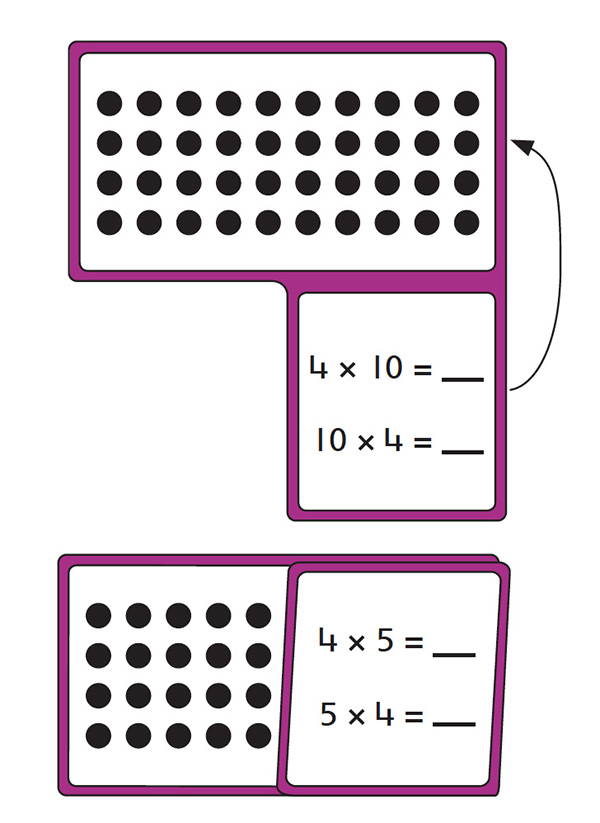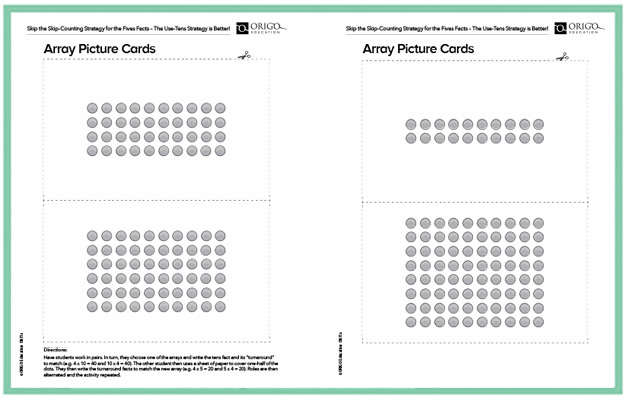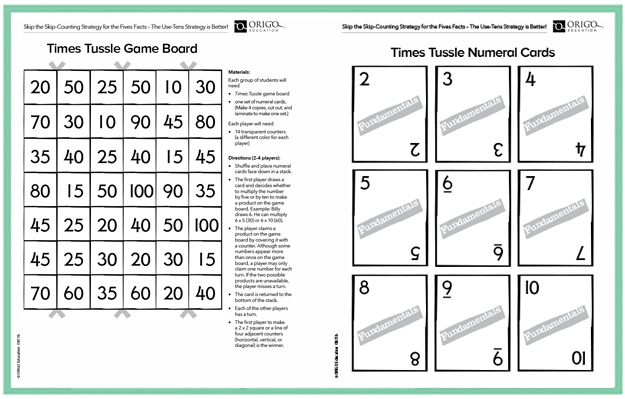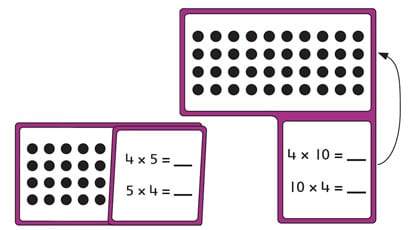Insights
Skip the Skip-Counting Strategy for the Fives Facts – The Use-Tens Strategy is Better!
Multiplication by 10: The use-tens strategy
For over a decade I’ve had the privilege of working alongside teachers to carefully consider the most effective ways to teach their students math concepts and skills. One skill that teachers have described as challenging for students is fluently recalling the fives multiplication facts. When I investigate further, I often discover that the instructional programs the teachers use encourage them to use skip-counting to teach the fives facts.
Students should use number fact strategies for multiplication that are efficient, flexible, and extendable to large numbers. Skip-counting is hardly that. This approach requires students to use more working memory than necessary since they have to:
- recall the skip-counting sequence for fives,
- keep track of the ongoing total and
- keep track of the number of times they’ve skip-counted.

We know from research that students should build on concepts they already know to reduce memory load. What are the first multiplication facts students know with fluency and ease? The tens facts! They have counted by tens since kindergarten, so naturally the tens multiplication facts are the key to connecting the fives facts!
Please read Powerful Strategies for Teaching Number Facts to learn about ORIGO’s four-step approach to teaching skills.
Introduce the Strategy:
The use-tens strategy, or the use of multiplication strategies with multiples of 10, highlights that 5 is half of 10, so the product of a fives fact will be half of the product of a related tens fact. This strategy enables the students to easily figure out facts beyond the range of the basic facts.
Introduce this strategy by using cards like the one shown below. When the bottom flap is unfolded, the card shows a tens fact. When the flap is folded, the card shows a fives fact. Show the folded card and ask, What do you see? How can you figure out the total number of dots? Unfold the flap to reveal the tens fact. Encourage students to use the known tens fact to figure out the fives fact. The goal is to have students see visually WHY the fives fact is HALF of the related tens fact. In other words, 4 x 5 is half of 4 x 10 because half of the number of dots in the array is covered.

Reinforce the Strategy: 10s Multiplication Free Worksheet
Have students work in pairs. Ask each pair to cut out the array picture cards show below. (Download yours here.) In turn, they choose one of the arrays and write the tens fact and its “turnaround” to match (e.g. 4 x 10 = 40 and 10 x 4 = 40). The other student then uses a sheet of paper to cover one-half of the dots. They then write the turnaround facts to match the new array (e.g. 4 x 5 = 20 and 5 x 4 = 20). Roles are then alternated and the activity repeated.

Array picture cards (Download here)
10s Game: Practice the Multiplication by 10 Strategy
Help kids link concrete and symbolic representations of the number facts with an activity or game.
Materials needed
Each group of students will need (Download yours here.)
- Times Tussle game board
- One set of numeral cards. (Make 4 copies, cut out, and laminate to make one set.)

Times Tussle game board (Download here.)
Each player will need
- 14 transparent counters (a different color for each player)
Game directions (for 2-4 players)
- Shuffle and place numeral cards face down in a stack.
- The first player draws a card and decides whether to multiply the number by five or by ten to make a product on the game board. Example: Billy draws 6. He can multiply 6 x 5 (30) or 6 x 10 (60).
- The player claims a product on the game board by covering it with a counter. Although some numbers appear more than once on the game board, a player may only claim one number for each turn. If the two possible products are unavailable, the player misses a turn.
- The card is returned to the bottom of the stack.
- Each of the other players has a turn.
- The first player to make a 2 x 2 square or a line of four adjacent counters (horizontal, vertical, or diagonal) is the winner.
Extend the Strategy
Encourage students to apply this strategy to numbers beyond the basic facts. For example, the strategy can be extended to solve 5 x 28. How would you solve it using this strategy? See this ORIGO One video for more.
Teaching the use-ten strategy for multiplication from ORIGO Education on Vimeo.
The Use-Tens strategy for multiplication is one of many important strategies included in The Box and Book of Facts for Multiplication and Division from ORIGO Education. Use these strategies to grow the fact fluency and mental computation power of YOUR students!
Click HERE to download the resources for this article!
And when you’re ready to build with more challenging multiplication facts, read our blog post to learn about teaching strategies for 6s and 9s multiplication.
About ORIGO Education
ORIGO Education is dedicated to making learning meaningful, enjoyable and accessible for all students with Pre-K and Elementary print and digital instructional materials, as well as professional learning for mathematics.
![]()




